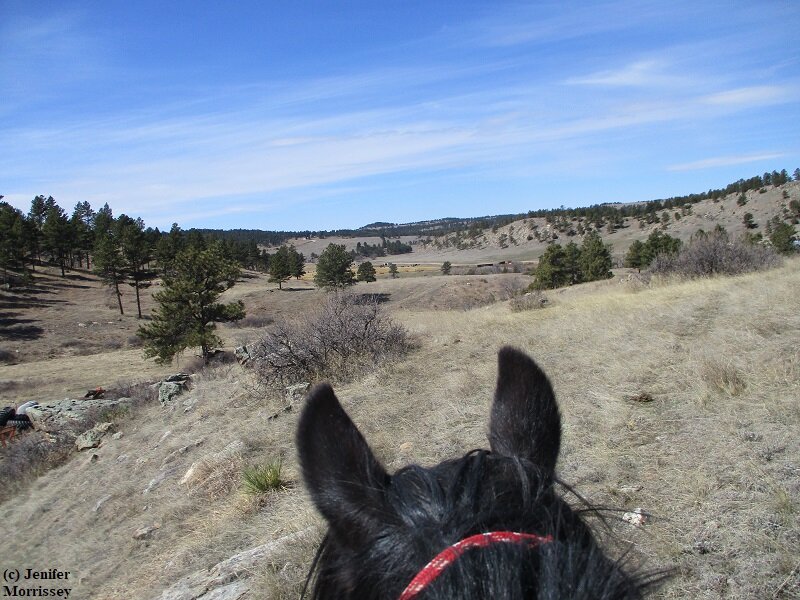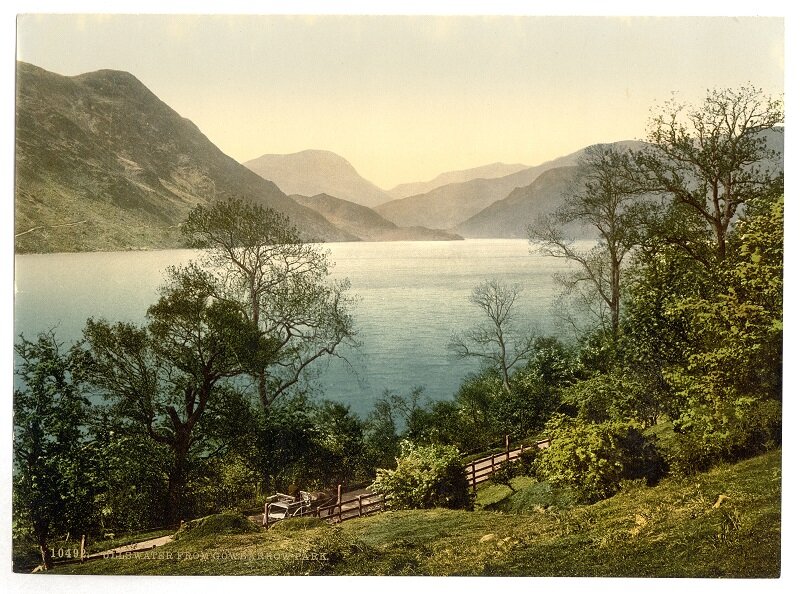When my friend Linda told me about an elderly friend of hers in Ohio who was growing frail, I told Linda I would do what I could to support her going to see her friend as soon as possible. A few days later someone in Ohio said they wanted to buy my weanling Fell Pony Willowtrail Henry. Linda immediately suggested that we deliver him and then she would go see her friend. Sometimes it is amazing how life works.
On the morning of our departure, it was twenty degrees Fahrenheit and snowing lightly. We had had an inch of fresh snow overnight. Just as I was leading Henry to the horse trailer to load, a bald eagle flew over us. As a friend texted to me later, it was a good omen! Henry loaded readily into the 3 horse-sized trailer configured as a single stall; I had deeply bedded it with straw and hay. We headed north towards Interstate 90. As the snow let up, the temperature began to drop.
I had never transported a pony across the country before, much less a weanling, much less headed into severe winter weather. Linda is a veteran of these sorts of trips, though, so she gave me confidence that we could pull the trip off. We drove east across South Dakota in the sun, but the outdoor temperature hovered between zero and five degrees Fahrenheit. A stiff wind made the effective temperature even colder. Ice began forming on the three water buckets I had brought along so Henry would have familiar water to drink.
It wasn’t just Linda that gave me confidence; Henry did, too. Each time we stopped, I checked to make sure hay was still interesting to him. I offered him water and salt, and I cleaned up any manure that he’d passed. Each time I appeared, he was happy to see me but not anxious or upset despite the cold and the unusual circumstances. We continued on our journey.
When we drove from daylight into night, the temperature began to rise slightly. By the time we stopped in western Iowa, it was 14 degrees Fahrenheit. While Linda was prepared to continue driving deep into the night, I had noticed that Henry was only eating when we stopped, so he was short of calories for the day. We hauled the three buckets of water and everything else that might freeze into the motel for a very short night’s sleep, a dozen trips in all. I offered Henry water from the motel, which he readily drank, for which I was thankful, and we left him snug in the trailer with a pile of hay.
It ended up being a good thing that the wake-up call at the motel came an hour and a half early. I checked Henry immediately, and he was still doing well. The water buckets had barely thawed, so I brought one into the cab between my feet where it would be warmer for Henry that day (my feet though did not much appreciate their new ice block neighbor!) We continued on our journey before the sun came up.
While we had watched the moon rise the night before, it was now cloudy, and the wind began to have snow in it. The real issue, though, was ice. As dawn turned to daylight, in a stretch of about forty miles, we saw twenty or more semi-trucks off the road and several more cars also in the wrong place. As we crossed into Illinois, the temperature continued to rise, eventually getting above freezing. From there into Indiana, everywhere we looked, streams and rivers were overflowing their banks and fields had standing water in them. We felt for the farmers who might have trouble, again, getting their crops in. Henry was still doing well. I was so thankful I had put him out on our ‘fell’ the night before we left so he had had plenty of opportunity to stretch his legs.
I was still dressed in my heavy winter clothing as temperatures continued to rise. When we crossed into Ohio at dark, it was in the mid-50s with high humidity. Now when I checked Henry, he was damp to the touch from the humidity but still interested in hay and water. I overheated doing his chores! I also took time to remove the remaining gumweed from his mane, tail, feather and body. His owner in Ohio assures me he’ll find plenty of similar vegetable matter to decorate his coat with, but I wanted him to arrive relatively clean. I suspect the nickname my friend Bruce gave him - King Henry GW - will continue to be apt!
What a good traveler Henry was: a good eater, a good drinker, and patient with the unusual housing. Nonetheless, he was very ready when, at 9pm, we reached our destination and he could step out of the trailer onto firm ground. That eagle, indeed, had been a good omen – a safe trip despite the weather. What an adventure!
© Jenifer Morrissey, 2020



















































